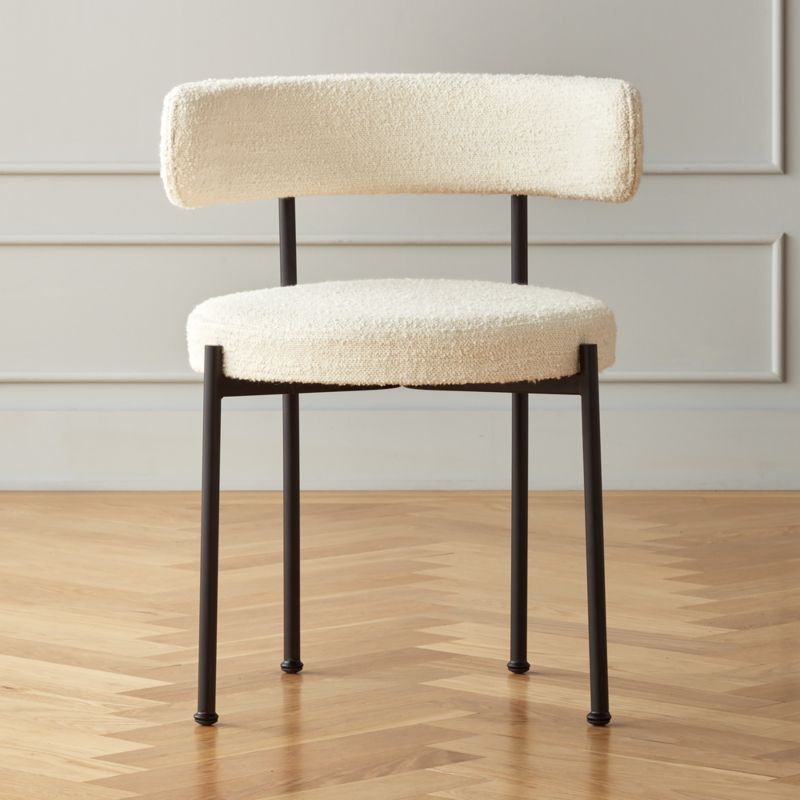Design and Style

Black and white, a timeless color combination, holds a remarkable ability to transform the design of a chair, seamlessly blending into diverse aesthetics, from minimalist to bold. This versatility makes it a go-to choice for designers seeking to create chairs that are both visually striking and adaptable to various interior styles.
The Use of Black and White in Classic Chair Styles
The interplay of black and white in classic chair styles showcases the power of this color combination to enhance existing designs. For example, the iconic Eames chair, known for its minimalist form, often features a black shell paired with a white base, creating a visually balanced contrast that emphasizes the chair’s clean lines. Similarly, the Barcelona chair, with its luxurious leather upholstery, often utilizes black and white for a sophisticated and elegant look. The Windsor chair, a classic with its distinctive spindle back, can be beautifully rendered in black and white, highlighting its intricate details and timeless appeal.
Materials and Their Integration with Black and White
The combination of black and white with different materials opens up a world of design possibilities. Leather, a material known for its durability and luxurious feel, pairs exceptionally well with black and white. A black leather chair with white stitching, or a white leather chair with black accents, can add a touch of sophistication to any space. Wood, with its natural warmth, can be combined with black and white for a more rustic or contemporary look. A white wooden chair with black metal legs can create a modern aesthetic, while a black wooden chair with white upholstery can add a touch of elegance. Metal, with its sleek and modern appeal, also complements black and white beautifully. A black metal chair with white cushions can create a minimalist and stylish look, while a white metal chair with black accents can add a touch of industrial chic.
Designing a Modern Chair Using Black and White
Imagine a modern chair with a sleek, minimalist design. The chair’s frame would be constructed from polished black metal, creating a strong and contemporary foundation. The seat and back would be upholstered in a luxurious white leather, providing both comfort and visual contrast. To add a touch of detail, the stitching on the upholstery would be done in a thin black thread, creating a subtle yet impactful design element. The chair’s legs would be slightly angled for stability and a modern aesthetic, and the overall design would be characterized by its clean lines and minimalist form. This chair, with its bold black and white color scheme, would be a statement piece in any modern interior.
Functionality and Usage

Black and white chairs, despite their simplicity, offer a surprising level of versatility and adaptability, making them suitable for a wide range of spaces and purposes. Their ability to seamlessly blend into various design aesthetics and evoke specific psychological responses makes them a popular choice for both residential and commercial settings.
Use in Different Settings
The use of black and white chairs transcends mere aesthetics, extending to their functional roles in various settings.
- Homes: Black and white chairs can add a touch of sophistication and elegance to living rooms, dining areas, and bedrooms. They can be used as statement pieces, accent chairs, or part of a coordinated set. White chairs, in particular, can help to brighten up a space and make it feel more spacious, while black chairs can add a sense of drama and formality.
- Offices: Black and white chairs are often favored in offices due to their professional appearance and durability. Black chairs, with their sleek and modern aesthetic, can create a sense of authority and focus, while white chairs can promote a more relaxed and collaborative atmosphere.
- Restaurants: Black and white chairs are popular in restaurants for their ability to complement various décor styles. Black chairs can add a touch of elegance and sophistication to fine dining establishments, while white chairs can create a more casual and inviting atmosphere in cafes and bistros.
Psychological Impact
The choice of black and white chairs can influence the psychological impact of a space.
- Black chairs: Black is often associated with power, sophistication, and formality. It can create a sense of authority and focus, making it suitable for offices and meeting rooms. However, too much black can also feel overwhelming or oppressive.
- White chairs: White is associated with cleanliness, simplicity, and openness. It can create a sense of spaciousness and calm, making it suitable for bedrooms, living rooms, and cafes. However, white chairs can be more prone to stains and may require more maintenance.
Creating Contrast and Unity
Black and white chairs can be used to create a sense of contrast or unity in a space.
- Contrast: Pairing black and white chairs together can create a bold and dramatic statement, adding visual interest and depth to a space. This contrast can be further enhanced by using different textures or materials for the chairs.
- Unity: Using a monochromatic palette of black and white can create a sense of unity and harmony in a space. This approach can be particularly effective in smaller spaces, as it can make the space feel more cohesive and less cluttered.
Pros and Cons
| Feature | Black Chairs | White Chairs |
|---|---|---|
| Pros | Sleek and modern aesthetic, durable, create a sense of authority and focus, can be used to add a touch of drama and sophistication | Brighten up a space, create a sense of spaciousness and calm, can be used to promote a relaxed and collaborative atmosphere |
| Cons | Can be overwhelming or oppressive in large quantities, prone to showing dust and dirt | More prone to stains, may require more maintenance |
Historical and Cultural Significance: Chair White And Black
Black and white chairs, with their timeless elegance and enduring appeal, have a rich history intertwined with cultural trends, artistic movements, and societal shifts. Their evolution, from simple utilitarian objects to iconic symbols of style and status, reflects the changing tastes and values of different eras and cultures.
The Evolution of Black and White Chairs
Black and white chairs have been a constant presence in human history, their forms and materials evolving alongside technological advancements and cultural preferences.
- Ancient Times: Early chairs, often crafted from wood, stone, or woven materials, served primarily functional purposes. While not always black and white, these chairs often featured natural hues and simple designs. For example, the ancient Egyptians used chairs with elaborate carvings, often painted in vibrant colors, including black and white.
- Medieval Period: During the Middle Ages, chairs became more elaborate, incorporating ornate carvings and decorative elements. Black and white were frequently used, often in combination with other colors, to create striking visual effects. Examples include the “throne chairs” of medieval monarchs, which often featured black and white accents.
- Renaissance and Baroque: The Renaissance and Baroque periods saw a resurgence of classical design principles, leading to the creation of chairs with elegant lines and intricate details. Black and white were popular choices for these chairs, reflecting the emphasis on balance, harmony, and grandeur. Notable examples include the iconic “Chiavari chair,” designed in the 19th century, which became a symbol of Italian craftsmanship and elegance.
- 18th and 19th Centuries: The 18th and 19th centuries saw the rise of various styles, including Rococo, Neoclassical, and Victorian. Black and white continued to be popular choices, often used to create dramatic contrasts and visual interest. The “Windsor chair,” with its distinctive turned legs and simple design, was often painted black or white, and became a staple in homes and public spaces.
- 20th Century and Beyond: The 20th century saw a shift towards modernism and minimalism. Black and white chairs became popular for their clean lines, geometric shapes, and timeless appeal. Examples include the “Barcelona chair” by Mies van der Rohe, a modernist icon that epitomizes simplicity and elegance, and the “Eames Lounge Chair,” designed by Charles and Ray Eames, which combines comfort and sophistication.
Notable Examples in Art, Literature, and Film
Black and white chairs have frequently been featured in art, literature, and film, serving as both decorative elements and symbolic objects.
- Art: In the realm of art, black and white chairs have been a recurring theme, appearing in works by renowned artists such as Pablo Picasso, Henri Matisse, and Salvador Dalí. These chairs often represent a sense of order, stillness, or contemplation, adding depth and meaning to the artistic compositions.
- Literature: In literature, black and white chairs have been used to create atmosphere, symbolism, and character development. For instance, in Fyodor Dostoevsky’s “Crime and Punishment,” the protagonist, Raskolnikov, sits on a black chair while wrestling with his conscience, creating a sense of tension and isolation.
- Film: In film, black and white chairs have been used to create visual contrast, emphasize mood, and enhance storytelling. The iconic “white chair” in Alfred Hitchcock’s “Psycho” serves as a chilling reminder of the film’s psychological suspense.
Cultural Interpretations and Meanings, Chair white and black
The use of black and white chairs varies across cultures, reflecting different aesthetic preferences, cultural interpretations, and symbolic meanings.
- Western Culture: In Western culture, black and white chairs are often associated with elegance, sophistication, and formality. They are commonly found in formal settings such as offices, courtrooms, and dining rooms, conveying a sense of authority and tradition.
- Eastern Culture: In Eastern cultures, black and white chairs can have different interpretations. In China, black is associated with power and authority, while white represents purity and simplicity. In Japan, black and white chairs are often used in traditional tea ceremonies, symbolizing balance and harmony.
- Contemporary Culture: In contemporary culture, black and white chairs are often seen as versatile and adaptable. Their neutral colors allow them to blend seamlessly with a variety of interior design styles, making them popular choices for both modern and traditional homes.
Chair white and black – The stark contrast of a white and black chair often evokes a sense of elegance and simplicity, but practicality is also paramount when considering outdoor seating. For those seeking a durable and convenient option, the hdx black plastic seat outdoor safe folding chair offers a reliable solution.
While the color scheme may not be as striking as a white and black chair, its weather-resistant design and easy storage capabilities make it a practical choice for any outdoor setting.
The juxtaposition of black and white in chair design often evokes a sense of stark contrast and sophistication. This dichotomy can be observed in various styles, including the elegant simplicity of a white wicker armchair or the bold statement of a black leather executive chair.
However, for those seeking a more natural and refined aesthetic, the black rattan lounge chair offers a compelling alternative. Its intricate weave and dark hue create a sense of timeless elegance, while its natural materials bring a touch of warmth and texture to any space.
Ultimately, the choice between white and black chairs often reflects individual preferences and desired ambiance, with each color offering a unique aesthetic and emotional resonance.

